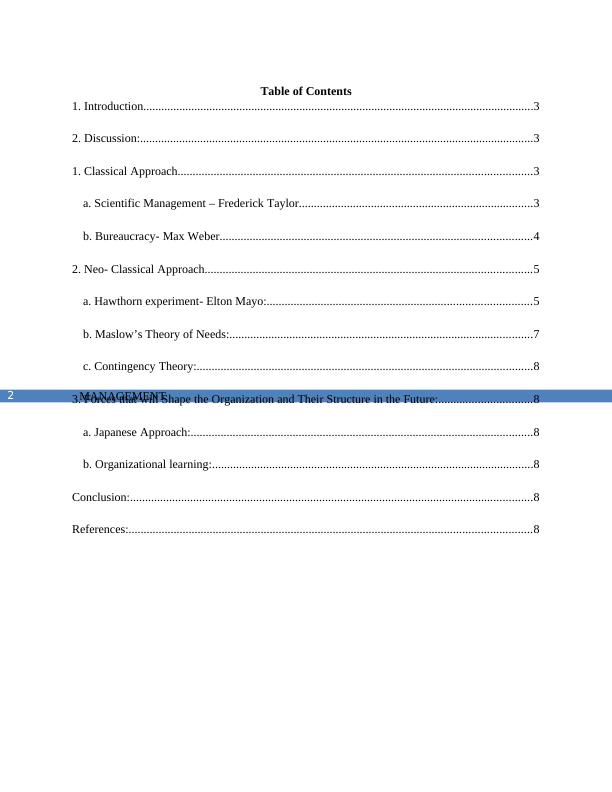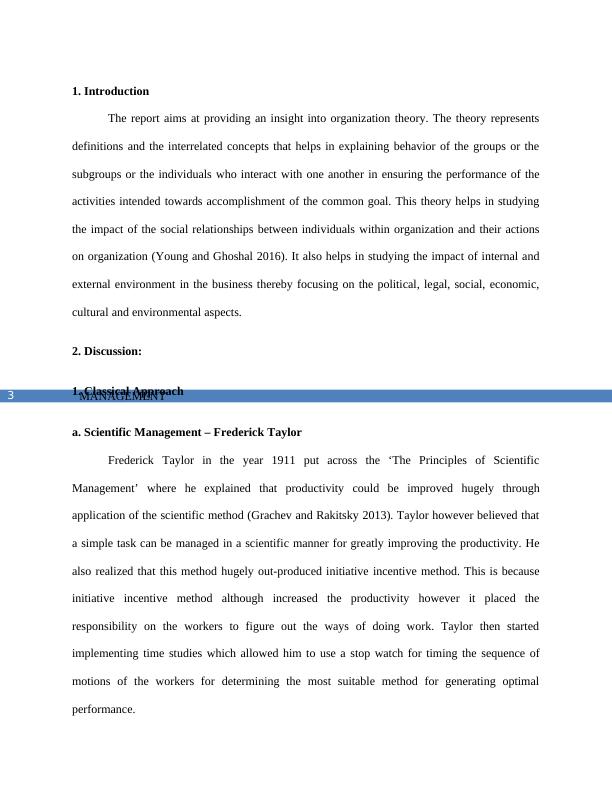Business Management Organization Theory
15 Pages3084 Words12 Views
Added on 2022-08-18
Business Management Organization Theory
Added on 2022-08-18
ShareRelated Documents
End of preview
Want to access all the pages? Upload your documents or become a member.
Organisation Theory: Classical and Neo-classical Origins and Forces Shaping Organisational Structures
|10
|2567
|1
Classical and Scientific Management Theory
|11
|2574
|314
Organizational Theory: Classical and Neoclassical Approaches
|9
|2586
|53
Insight Into the Organization Theory - Essay
|12
|2795
|16
Classical and Neo Classical Theory in Organizational Performance
|9
|2554
|52
Organisation Theory: Classical and Neo-Classical Origins and Future Organisational Structures
|9
|2533
|81




